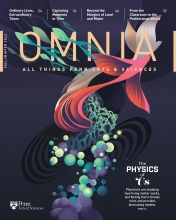Church, State, and Today’s Supreme Court
Gabriel Raeburn, GR’22, Dean’s Teaching Fellow for Excellence in Religious Studies, highlights religion’s role in recent blockbuster rulings.
At the close of its latest term, the U.S. Supreme Court issued a series of religiously charged rulings that shocked many people across the country. Gabriel Raeburn, Gr’22, wasn’t one of them.
“The separation of church and state in America has always been blurry,” says Raeburn, a Dean’s Teaching Fellow for Excellence in the Department of Religious Studies who completed his Ph.D. in religious studies last spring. “While for much of the 20th century, the Court looked to protect minority religions, we’re now seeing a shift toward prioritizing the rights of conservative Christians. That shouldn’t come as a surprise, given the organizing we’ve seen on the Right over the last few decades.”
Raeburn credits that organizing with engendering a conservative legal movement that facilitated the Court’s June 2022 decisions sanctioning a public high-school football coach’s on-field prayer (Kennedy v. Bremerton School District); endorsing the use of taxpayer money for religious-school tuition (Carson v. Makin); and striking down the 1973 Roe v. Wade ruling that guaranteed abortion rights (Dobbs v. Jackson Women’s Health Organization).
Whereas Catholics, Mormons, and evangelical Christians previously avoided collaboration, Raeburn says, they began to unite throughout the 1960s and '70s, during and after Earl Warren’s tenure as Chief Justice of the United States.
“The Warren Court moved the country in a progressive direction with decisions involving desegregation, school prayer, and birth control, so these once-oppositional communities partnered to build a legal infrastructure that would advance their social agendas,” he explains. “Their coalition-building intensified in the '80s, after President Reagan failed to pass constitutional amendments allowing prayer back in schools and banning abortion.”
Conservatives created the Federalist Society—a pipeline of right-wing lawyers they could stack the courts with at every level—and established legal foundations to provide representation in religious freedom cases, Raeburn says, noting that despite last June’s landmark rulings, he does not believe their successes signal an end to debates involving church and state.
“The Supreme Court has been an oppositional force to progress multiple times before, and progress was still made. For example, the Court was explicitly pro-slavery and opposed the New Deal, yet big achievements were made during those periods,” he says. “There’s an understandable feeling of resignation at the moment, but this isn’t necessarily the end of anything.”




